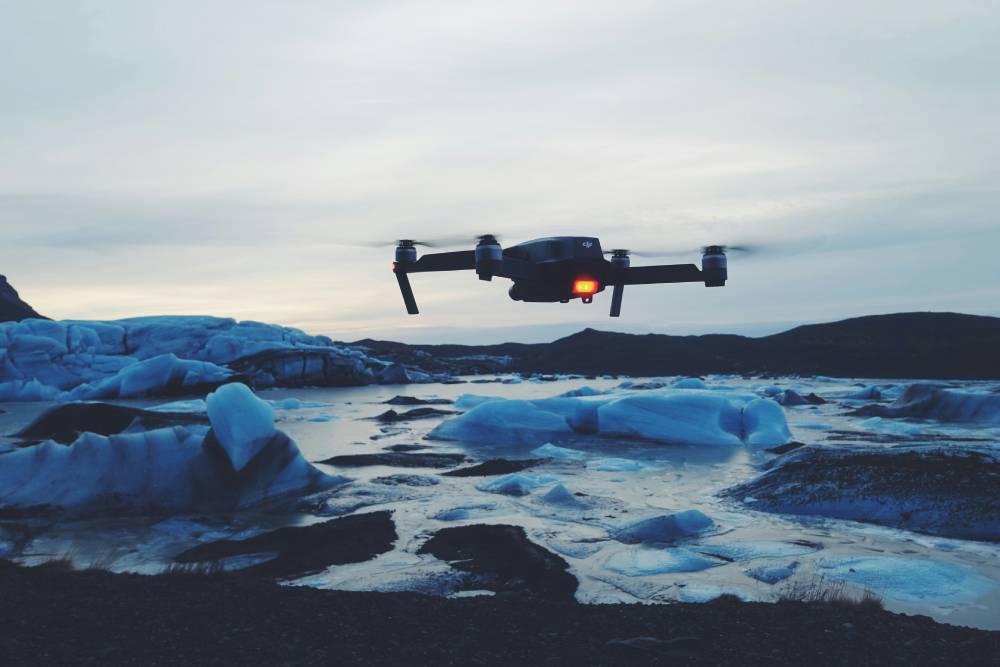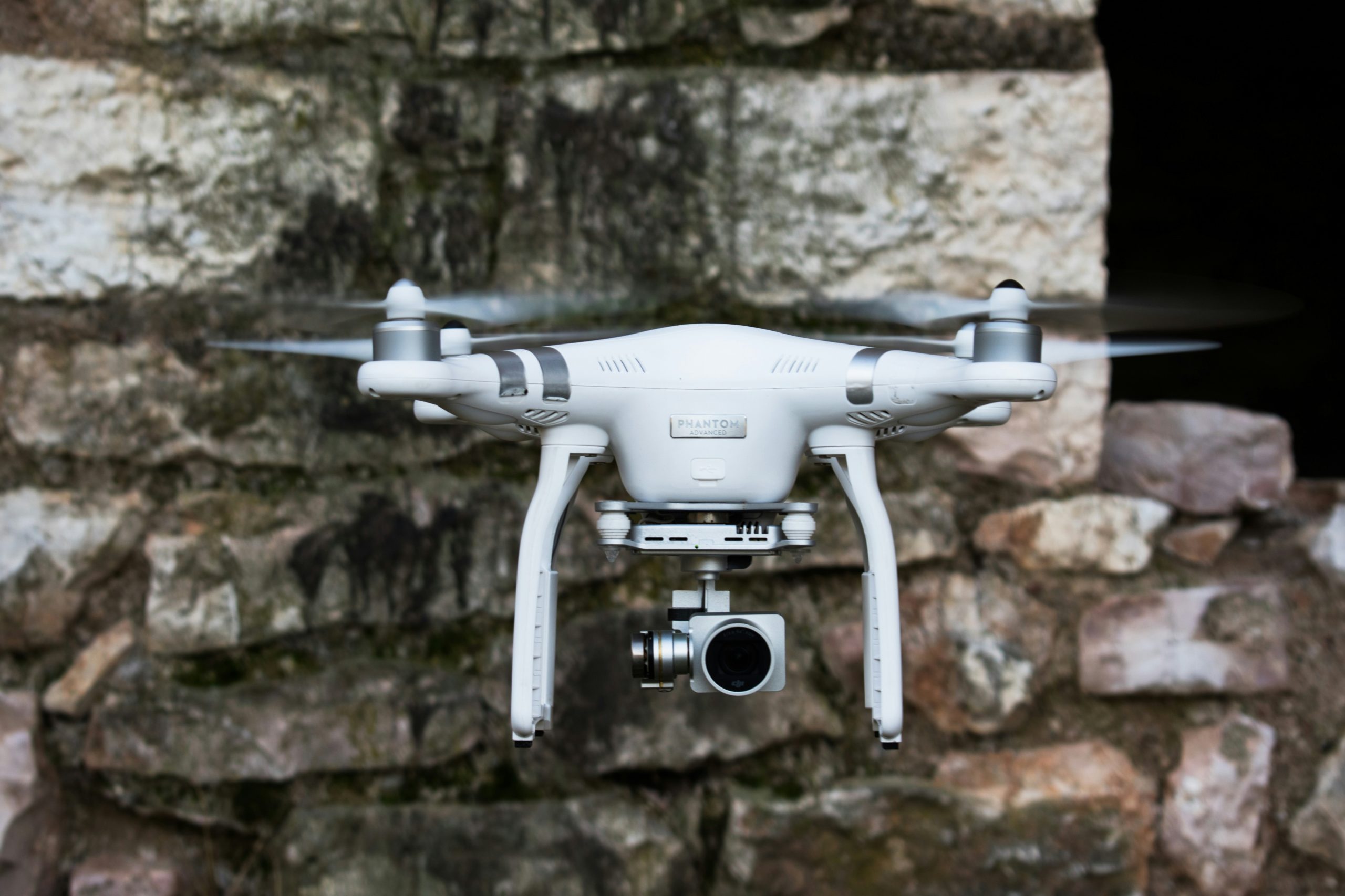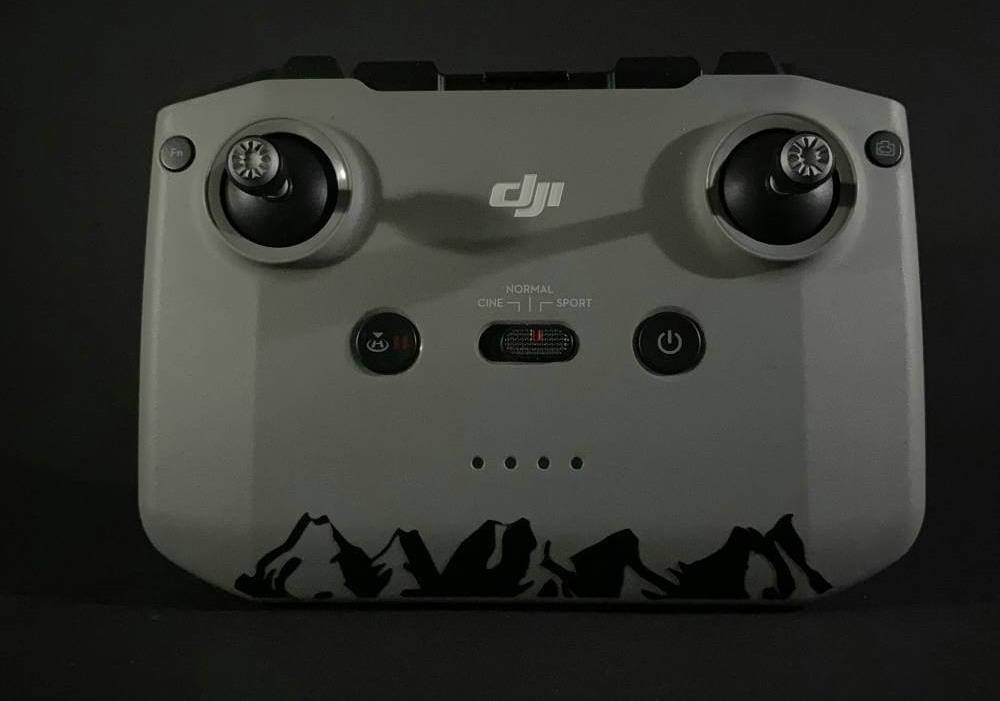Do you want to fly your DJI drone in a restricted area, but DJI FlySafe won’t let you? Read on to find out how to fix that.
DJI FlySafe uses GPS to create virtual no-fly zones around sensitive areas like airports and government buildings. While this is meant to be safe, it’s a pain for drone pilots who want to explore new skies.
This guide will teach you how to bypass DJI no-fly zones while still being safe.
What is DJI FlySafe?
DJI FlySafe is an advanced technology built into DJI drones to encourage safe and responsible flying for drone pilots. This includes several features that improve flight safety and compliance with regulations.
Geofencing: One of the main components of DJI FlySafe is geofencing, which creates virtual boundaries that prevent drones from flying in restricted areas. These no-fly zones are around sensitive areas like airports, military bases, and government buildings. Using GPS, geofencing ensures drones don’t accidentally fly into areas where their presence could be a risk to public safety or security.
Flight Data Recorder: Another part of DJI FlySafe is the flight data recorder. This records critical information about the drone’s flight path, including altitude, speed, and location. In the event of an accident or incident, this data will be super helpful in understanding what happened and improving future safety measures.
Safety Alerts and Notifications: DJI FlySafe also gives pilots real-time alerts and notifications of any hazards or restrictions in their flying area. This proactive approach helps pilots make informed decisions and ensure overall flight safety.
DJI Geofenced Areas
Geofencing is a software feature that restricts drone flights in certain areas for safety and regulatory compliance. Knowing the geofenced areas is important for responsible flying.
How to find Geofenced Areas?
To check if your desired flying area is geofenced, you can use DJI’s Fly Safe Geo Map. Here’s how:
Access Geo Map: Go to DJI Fly Safe Geo Map
Enter Location: Type in the address of your flying location in the search box.
Check Zones: Make sure to select “Warning Zones” and “Enhanced Warning Zones” to see all the geofencing restrictions in that area.
DJI Geofencing Zone Colors
DJI uses a color-coded system to help pilots easily identify the different geofenced areas:
Red Zones: These are restricted areas that require a Custom Unlock to fly. Accessing these zones usually involves a formal request and approval process as they are near sensitive areas.
Gray Zones: These areas have altitude limits and are near airports. Flying is allowed, but with altitude restrictions, these zones can’t be unlocked.
Blue Zones: Flying is risky but allowed with Self-Unlock. Pilots need to acknowledge the risks and take responsibility for their flights in these areas.
Yellow Zones: These areas are marked as dangerous. Pilots will get alerts without needing to unlock. Flying is allowed, but caution is advised due to the risks.
What is DJI FlySafe Unlocking?
DJI FlySafe Unlocking allows drone pilots to bypass DJI’s no-fly zones and fly in normally restricted areas. This is useful for those who want to explore new locations or use drone features that are limited by geofencing regulations.
DJI Unlocking Types
DJI Self Unlock
Self-unlocking is a process of manually overriding the restrictions set by DJI’s no-fly zones. This method allows you to bypass geofencing limitations without going through the official unlocking process, but it comes with some complexities and risks.
How does DJI Self-locking Work?
Connect to Computer: To start the self-unlocking process, you need to connect your drone to a computer. This is required to access software that allows you to modify the drone’s settings.
Special Software: Once connected, you will need to use special software to change the drone’s GPS coordinates. This software can modify the drone’s geolocation data so it can fly in restricted areas. However, this process is complicated and not recommended for beginners as it requires technical knowledge.
Timing of Self-Unlocking: You can self-unlock before you fly or while you are at the location where you want to fly your drone. This gives you the flexibility to adjust your approach according to your flying needs.
Considerations and Risks
Complexity: Self-unlocking is quite complex and requires a good understanding of the software and drone systems. If you are not techy, this method can be confusing and error-prone.
Safety and Compliance: Self-unlocking can give you access to restricted areas, but you must consider the safety implications. Bypassing no-fly zones can be dangerous to the public and may be against local regulations. Pilots must always prioritize safety and fly responsibly.
Warranty and Support: Self-unlocking may void your drone’s warranty or support from DJI. Be aware of the consequences before you proceed with this method.
DJI Custom Unlock
Custom Unlock is a process that allows drone pilots to get permission to fly in restricted zones by getting a specific unlock code from DJI. This is for those who need to fly in normally off-limits areas due to safety regulations or geofencing restrictions.
How does DJI Custom Unlock work?
Getting the Unlock Code: Custom Unlock can only be obtained through DJI’s official website. To start the process, you will need to provide proof of authorization for your intended flight in the restricted zones. This may include flight plans, permits, or other relevant information that justifies your reason for flying in the area.
Advance Planning: Make sure to get your Custom Unlock before heading out to the field. The process takes time, and it is not recommended to wait until the last minute to request your unlock code.
Processing Time: Don’t expect to get Custom Unlock immediately. The review and approval process takes time, so make sure to plan ahead and allow enough time for DJI to process your request.
Benefits of Custom Unlocking
Access to Restricted Areas: Custom Unlock allows you to fly your drone in restricted areas, so you can capture aerial footage or conduct operations that require access to those areas.
Compliance with Regulations: By getting a Custom Unlock, you are flying in compliance with local regulations and safety guidelines, which are necessary for responsible drone operation.
Professional Use: This is useful for commercial drone pilots who need to fly in restricted areas for projects such as surveying, inspections, or emergency response.
How to Unlock DJI No Fly Zones?

LAANC Method
LAANC (Low Altitude Authorization and Notification Capability) is a system that simplifies the process of getting permission to fly in controlled airspace. This is good for drone pilots who need to fly in restricted areas.
How does LAANC work?
Fast Approval: With LAANC approval, drone pilots can get real-time permission to fly in controlled airspace, one of the most popular methods to unlock DJI Fly Safe zones. This allows for faster and more efficient drone operation planning, especially in busy airspace.
Integration with DJI: When using LAANC, pilots can integrate the approval process with their DJI drones. So, once you get LAANC approval, you can proceed with your flight plans in the designated airspace.
Limitations of the LAANC Method
Geo-Fencing Restrictions: Even with LAANC airspace approval, DJI’s geo-fencing system may still block you from taking off. This means you may have permission to fly in controlled airspace, but the drone’s built-in restrictions will still prevent you from flying.
Flaws in the System: Unfortunately, LAANC has flaws. One issue is that it auto-populates TFRs (Temporary Flight Restrictions) in areas without actual TFRs. This will cause confusion and frustration for pilots trying to fly their drones in areas they think are clear for flight.
Impact on Commercial Operations: We have experienced this ourselves, and it can be a big problem for commercial drone operations. The added complexity of LAANC approvals and DJI’s geo-fencing restrictions can be challenging for pilots, especially those working on time-sensitive projects.
Switch to Atti Mode
Atti Mode (Attitude Mode) is a flight mode that can improve your drone’s performance, especially for smoother video and better subject tracking. Drone U has shown how to hack the Mavic 2 Pro to access this mode so pilots can experience a different flying feel.
What is Atti Mode?
In Atti Mode, the drone uses its internal sensors to maintain altitude but does not use GPS for position hold. This means the drone will stay at a consistent height but may drift with the wind or other environmental factors. This is useful in:
Smoothen Video Motions: Pilots can get smoother video by switching to Atti Mode. The drone doesn’t constantly adjust its position to maintain a GPS lock, which can cause jerky movements in the video. Instead, the drone glides more naturally, and you get more cinematic shots.
Easier Subject Tracking: Atti Mode makes subject tracking easier as the drone doesn’t fight to stop when you release the control sticks momentarily. This allows for more fluid movement when following a subject and is ideal for dynamic flying scenarios.
How to Switch to Atti Mode?
Hacking the Mavic 2 Pro: To access Atti Mode on Mavic 2 Pro, you may need to follow specific steps or hacks as shown by Drone U. This will involve adjusting settings in the drone’s firmware or using third-party apps.
Switching to Atti Mode: Once you have hacked the drone, you can switch to Atti Mode in the flight settings. Make sure to get familiar with how the drone behaves in this mode, as it will differ from GPS mode.
When Using Atti Mode?
More Pilot Responsibility: In Atti Mode, the pilot has more control over and responsibility for the drone. You will need to be more aware of the drone’s position and altitude, especially in windy conditions.
Less Stable: Since the drone doesn’t use GPS for stabilization, it may drift more than in GPS mode. Pilots should be prepared to make constant adjustments to maintain the desired flight path.
Unlock Certificate
Some drone pilots use an unlock certificate to unlock DJI geo zones so that they can bypass no-fly zones. This hack involves connecting your drone to a computer and removing all DJI no-fly zones from the drone’s firmware.
How to Unlock Certificate?
Connect Your Drone: First, plug your DJI drone into your computer. This will allow you to access the drone’s settings and make the necessary changes.
Follow the Process: To hack successfully, follow the instructions on the page for Unlock Certificate. This will guide you through removing no-fly zones from your drone.
Recommendations and Warnings
For Commercial Pilots: This is recommended for commercial pilots who need to fly in restricted areas for their work. Unlocking geo zones can be very useful for certain projects, such as aerial photography, surveying, or inspections.
Warning for Recreational Pilots: Recreational pilots should be careful when hacking their drones. Bypassing no-fly zones can be dangerous and may violate local regulations. Make sure you understand the implications of flying in restricted areas and prioritize safety.
Caveats of Unlock Certificate Hack
Certificate Activation: While the hack adds the unlock certificate to the drone, pilots who want to fly indoors will need to turn off the certificate to fly. This is an essential consideration, as it will limit the drone’s functionality in specific environments.
Airspace Awareness: Even with the hack, pilots will still get notifications when they are in restricted or controlled airspace. This is to maintain awareness of safety regulations even when no-fly zones are removed.
Compatibility: The hack is supposed to work for all DJI drones. When it was first released, some users reported errors on Facebook, but most of those issues seem to have been fixed already.
Does DJI No Fly Zone Hack Void Warranty?
One of the most common questions about the DJI No Fly Zone hack is whether it will void your drone’s warranty. This is a valid concern, as many pilots want to keep their investments protected.
Warranty of the Hack
Warranty Status: The aircraft’s warranty should not be voided just by adding a certificate to enable flight in restricted airspace. Many users have hacked their drones to bypass no-fly zones and can still use DJI’s Care Refresh program, which covers accidental damage.
User Experience: Multiple users have reported no issues with warranty claims after hacking their drone. So, it seems DJI doesn’t consider adding an unlock certificate as a major change to the drone’s functionality that will void the warranty.
Future Replacement
Drone Insurance: While the hack won’t void your warranty, it’s still good to consider getting drone insurance instead of relying on DJI’s Care Refresh program, especially if you plan to replace your drone in the future. Insurance can provide broader coverage and may be more useful in certain situations like theft or loss.
Coverage: Before you hack, make sure to read the terms and conditions of DJI’s warranty and any insurance policy you may get. Know what’s covered and what’s not so you can make informed decisions about your drone’s protection.
Conclusion

While there are workarounds for geofencing – software that limits flight zones – remember that FAA regulations are in place for a reason. They are for the safety of all airspace users, including manned aircraft and drone operators.
Authorization
To operate in controlled airspace, you must have the right authorization. This means getting the necessary permits, like LAANC or Custom Unlock, from DJI. Make sure to follow these regulations to avoid legal trouble.
Liability and Responsibility
Using workarounds doesn’t waive liability. The FAA rules clearly state the ultimate responsibility of a drone pilot for safe operations. As a drone pilot, you must know where you can and cannot fly. Ignoring these regulations will have serious consequences, including fines and loss of flying privileges.
Proper Use of Hacks
We advise pilots to responsibly use any hacks or workarounds to keep the airspace safe. The airspace integrity depends on all operators to follow the rules and regulations.
Resources for Pilots
If you have the necessary certifications and follow the FAA rules, you can fly your drone smoothly. The FAA also provides resources to help you know the airspace restrictions in your area, including maps and educational materials. Get to know these resources to make your flying experience smoother and compliant with all regulations.

















